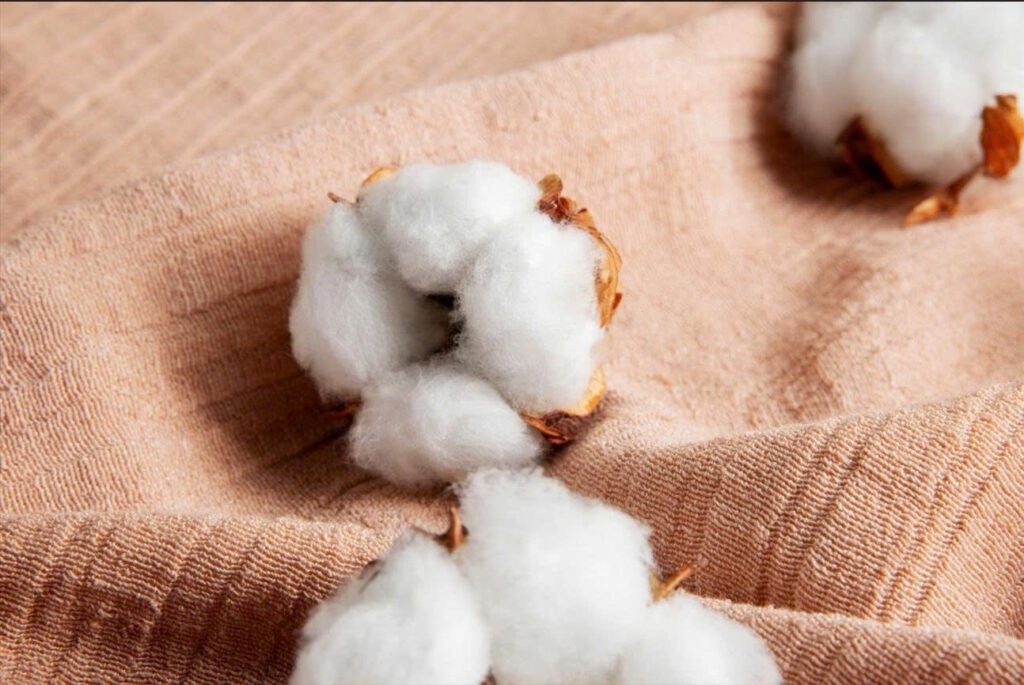
Fabric sourcing plays a critical role in shaping both the sustainability and quality of apparel products. From selecting certified materials like organic cotton and recycled polyester to evaluating supply chain impact, smart sourcing helps brands balance environmental goals with performance and scalability. This writing covers essential fabric choices, the impact of sourcing decisions on the final product, and how manufacturers can support responsible sourcing at scale.
Sustainable Fabric Sourcing: What Apparel Brands Should Know
Key Sustainable Fabric Options
When it comes to sourcing sustainable fabrics, brands now have a wide range of high-performance and low-impact materials to choose from, each suited for different types of garments and consumer needs.
Organic cotton is a staple sustainably. Free from synthetic pesticides and fertilizers, it reduces water pollution and improves soil health. It’s commonly used in essentials like T-shirts, casualwear, babywear, and loungewear.
Recycled polyester (rPET), made from post-consumer plastic bottles or textile waste, helps reduce landfill and carbon footprint. It’s a strong option for activewear, outerwear, linings, and swimwear, though it remains non-biodegradable. An activewear manufacturer might choose recycled polyester (rPET) to align with sustainability goals while maintaining the performance qualities needed for high-intensity use.
TENCEL™ Lyocell and Modal, sourced from FSC-certified wood pulp, are known for softness, moisture management, and closed-loop production. These fibers are used in dresses, intimatewear, loungewear, and bedding.
LENZING™ ECOVERO™ is another wood-based viscose fiber, but with up to 50% lower emissions and water impact than conventional viscose. Its traceable origin and EU Ecolabel certification make it a trusted choice for fashion-forward blouses, dresses, skirts, and lightweight tops.
Bamboo viscose, if mechanically processed, can be a low-impact option valued for its softness and natural antibacterial properties, popular in socks, underwear, and basics.
Other key materials include hemp (ideal for workwear, denim, and outdoorwear), linen (great for warm-weather apparel), Econyl® (regenerated nylon used in swimwear and leggings), and Piñatex® (a plant-based leather alternative from pineapple leaves).
Each fabric choice should align not just with sustainability goals, but also with product function, durability, and consumer expectations.
When it comes to sourcing sustainable fabrics, brands now have a wide range of high-performance and low-impact materials to choose from
Why Fabric Sourcing Is Central to Quality, Brand Trust, and Sustainability
Fabric sourcing is not a technical step in production; it’s a brand-defining decision. It impacts how a garment performs, how it’s perceived in the market, and how responsibly it lives within the planet’s limits.
At the product level, fabric sourcing defines core performance attributes such as durability, comfort, and fit. A material that aligns with sustainability goals but lacks quality can lead to early wear, returns, or even negative consumer reviews. Conversely, a high-performance fabric that isn’t responsibly sourced may undercut a brand’s sustainability message and expose it to reputational risks.
Sourcing also carries significant brand implications. Today’s consumers are more informed and expect transparency about where and how their garments are made. A thoughtful sourcing strategy, supported by third-party certifications and transparent supply chain data, strengthens consumer trust and adds storytelling value to the brand.
On a broader level, sourcing affects a product’s full environmental lifecycle, from fiber cultivation or production to processing, logistics, and supplier practices. Ethical sourcing reduces not only emissions and resource use but also ensures alignment with labor and human rights standards.
Fabric sourcing is not a technical step in production; it’s a brand-defining decision
How Clothing Manufacturers Can Support Responsible Sourcing at Scale
Clothing manufacturers, especially those offering full-package services, play a crucial role in scaling sustainable practices efficiently and effectively. By leveraging their industry expertise and supply chain networks, these sustainable clothing manufacturers can help brands make sourcing decisions that balance environmental impact, functionality, design intent, and cost.
One of the key advantages of working with full-package manufacturers is access to an experienced R&D team that can recommend suitable fabrics aligned with the garment’s design and performance requirements. Whether a brand is targeting breathability, odor resistance, wrinkle control, or moisture management, a capable manufacturer can identify or even develop fabric solutions that deliver the right features while meeting sustainability criteria.
Additionally, these manufacturers often maintain broad sourcing networks across both domestic and international suppliers. This allows them to offer flexible sourcing strategies tailored to market needs, price points, and availability, while also understanding how origin can affect import duties or trade compliance.
Trusted manufacturers also help ensure that the materials used are certified according to relevant environmental or social standards, such as OEKO-TEX®, GOTS, FSC, or OCS, depending on client requests.
Clothing manufacturers, especially those offering full-package services, play a crucial role in scaling sustainable practices efficiently and effectively
In conclusion, sustainable fabric sourcing is no longer just a trend, it’s a strategic imperative for apparel brands aiming to meet rising consumer expectations, comply with evolving regulations, and build long-term brand value.
From choosing the right materials to understanding their environmental impact, every decision made during sourcing influences product quality, brand perception, and ecological footprint.
Working closely with knowledgeable full package clothing manufacturers adds another layer of advantage, enabling brands to access the right fabrics, ensure compliance, and innovate responsibly.
As the industry moves toward transparency and circularity, brands that prioritize informed, ethical sourcing will not only reduce risks but also strengthen their competitive edge. In today’s market, responsible sourcing is more than a supply chain function; it’s a commitment to integrity, innovation, and the future of sustainable fashion.
